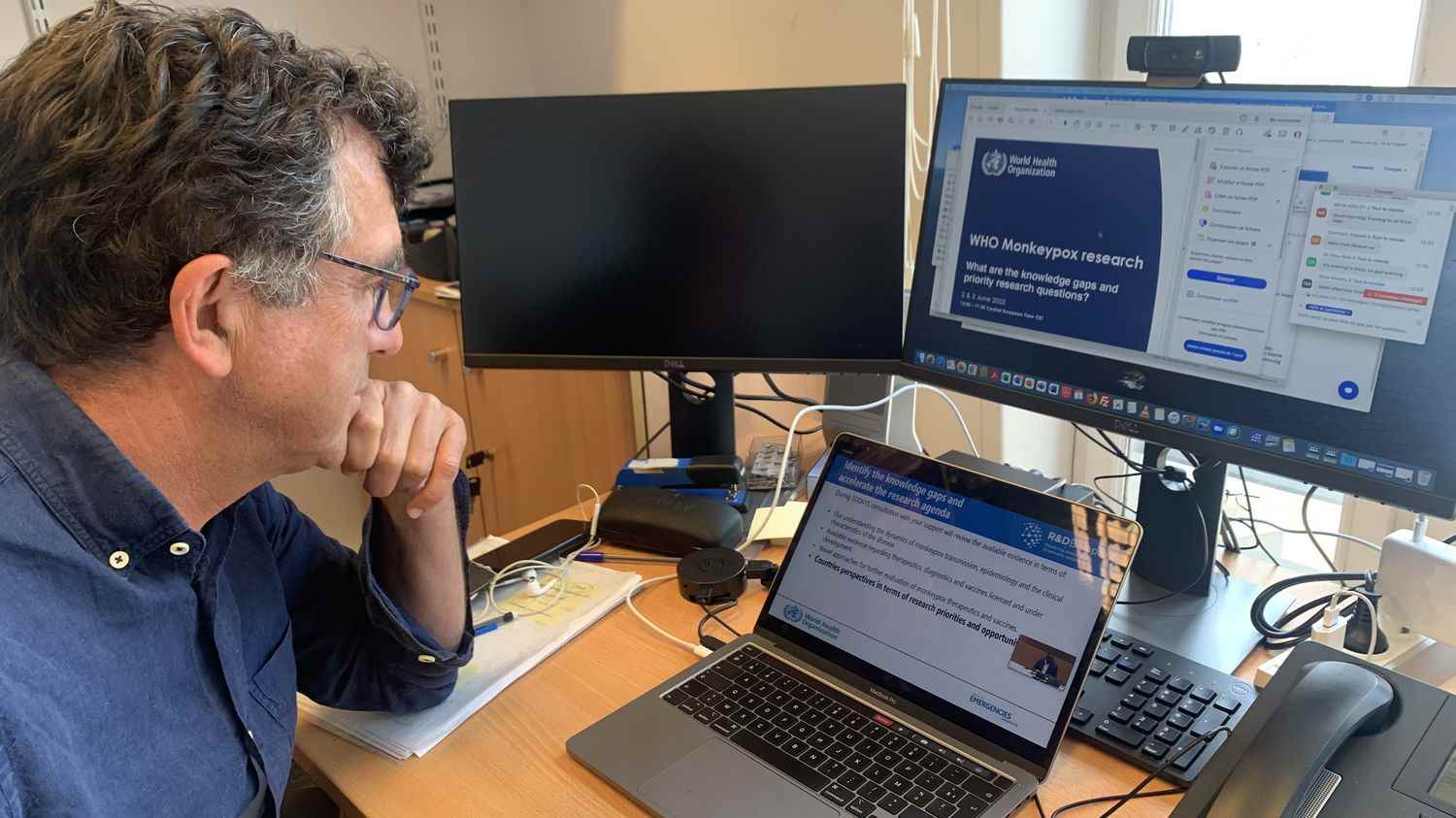Researchers around the world are leading the investigation into monkeypox, as the World Health Organization (WHO) said on Tuesday June 14, 2022 that it was seeking to assess whether or not monkeypox should be considered a “an international public health emergency”. At the top of the questions that remain, and to which scientists are trying to answer: how this virus which usually circulates in Africa arrived in Europe and America?
>> The article to read to understand monkeypox, the virus of which circulates in around thirty countries
In France, if there are “only” 91 patients, without serious form or death, the unusual circulation of the disease worries, mobilizing a number of teams of researchers. Around the world, scientists are trying to understand why cases are increasing in Europe and North America only between humans, while in Africa it is in most cases animals that transmit the disease to humans.
[#Monkeypox] Update on June 9, 2022 at 2 p.m.
➡️ 91 confirmed cases of Monkeypox have been reported in France
Find out more https://t.co/le4PK4yW3e– SantépubliqueFrance (@SantePublicFr) June 9, 2022
The WHO takes stock regularly and the team of Pr Arnaud Fontanet, epidemiologist, tracks down monkeypox in Africa where the virus appeared in 1970 in a baby in the Congo. The first time it was identified was on a monkey in a pet store in Denmark in 1958, hence the name “monkey pox”. However, it is not the primate that transmits the disease, but rather squirrels or small rodents. It was prairie dogs infected with the disease that caused the first human cases in the United States in 2003.
In Africa, the virus has been circulating in the population since the 1970s, and sometimes causes deaths. Camille Besombes, infectious disease doctor in the epidemiology of emerging infectious diseases unit at the Institut Pasteur in Paris, is carrying out the investigation in the Central African Republic with the teams of the institute to find out where this virus comes from. “A small health center informs the Pasteur Institute in Bangui when there is a suspected caseshe explains. The Institut Pasteur in Bangui dispatches an investigation team, in which I am part when I am in the field. We first go to see the humans affected, we ask them questions, we take blood samples in PCR to look for the virus.
“We are interested in their contacts, then we are interested in the animals, trying to set traps, and asking local people to bring us the animals they usually eat or hunt to see s ‘there is something.”
Camille Besombes, infectiologistat franceinfo
In France, the procedure is identical: under the leadership of Public Health France, as soon as a case of monkey pox is identified, researchers take samples of the lesions, the pimples caused by the disease, and send these samples to the Armed Forces Biomedical Research Institute or the Pasteur Institute in Paris.
At the end of these initial investigations, the scientists were able to establish that the strain which is rampant on our continents is the same as that which circulates in West Africa, that is to say the least serious. The epidemic in Europe most likely has a single origin, since they found similarities in the sequencing of several samples.
Clues make it possible to establish that the virus would have arrived in Europe during a gay pride at the beginning of May in the Canary Islands. This is the thesis of the“super-spreading event”explains Professor Arnaud Fontanet: “What is special about this epidemic, he says, is that there seem to have been one or two events that we call in our jargon ‘super-spreader’ events. It simply means that there were mass gatherings where there could have been a lot of contamination and the start of an epidemic, continues the epidemiologist. Since then, the epidemic continues to be transmitted overwhelmingly in the male homosexual community.
In Portugal, a team of researchers analyzed the genome of the virus taken from nine patients and discovered small mutations, perhaps the beginning of a clue to this new mode of transmission between men, even if there are still a good number of ‘unknowns. “The eruption is a little different from that observed in Africa, with much more lesions in the genital area”emphasizes Professor Arnaud Fontanet.
“There is probably sexual transmission. Is it contact or sexual intercourse? Is the semen infected? The range of research to be done is still very large.”
Pr Arnaud Fontanet, epidemiologistat franceinfo
The semantics of sequencing and contact cases are furiously reminiscent of that of Covid-19, but the disease has little to do with the coronavirus. First of all, it is not as serious, nor as contagious as the Covid: you really need close contact to catch it. The subject is contagious when experiencing symptoms such as high fever, headache and swollen glands. Scientists are therefore quite calm about the evolution of the disease: there is no massive epidemic in sight.
>> Monkey pox: EU signs contract for more than 100,000 doses of vaccines
In addition, research is also advancing on treatments and a famous vaccine. Thus, to protect contact cases of patients, the vaccine against smallpox is used, which is 85% effective against this monkeypox. There are also treatments for the most fragile, but for the majority of patients, they are not necessary, the disease resolves itself in a few weeks.
